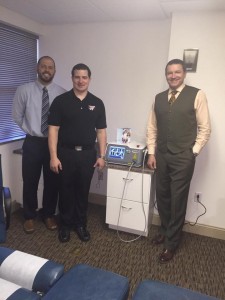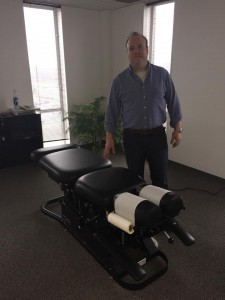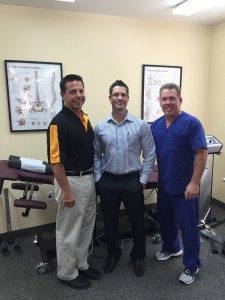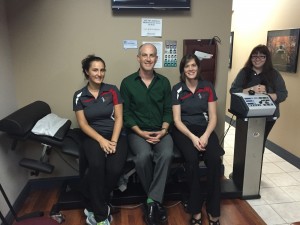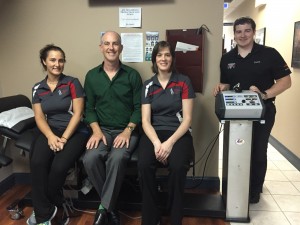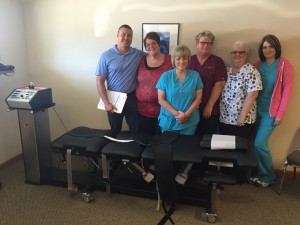Travis Buffy installs a new KDT Neural Flex at Advanced Chiropractic & Spine Center with Dr. Keith Miller and staff located in Souderton, PA
/0 Comments/in Decompression /by Lori KlinkA great experience that has helped me beyond measure in my decompression practice.
/0 Comments/in Decompression /by Lori Klink“I attended the Kennedy Decompression Certification in Saint Louis. Dr. Kennedy covered everything one would want and need to know about Traction. While the material presented is sometimes “meaty”, he utilized a lot of wit and humor which made the seminar anything but dry. In fact, I found it not only informative, but highly entertaining. Dr. Kennedy’s right hand man, Travis Buffy, did a fantastic job of showing the audience (utilizing a decompression table and other equipment) the ins and outs of what Dr. Kennedy was explaining. They make an effective team. Lastly, and this impressed me the most, was the humility of Dr. Kennedy. This is a man who most would say is the foremost expert on Spinal Decompression today, and yet he was not arrogant in any way. Nor did they once try to push their own decompression system, which in my opinion is the best on the market. All in all, a great experience that has helped me beyond measure in my decompression practice. I’ll be taking a review course with Kennedy Decompression Seminars in the future.
Jimmy O’Rourke, D.C.–Jamesport, MO”
You are a class act
/0 Comments/in Decompression /by Lori Klink“Just a few words about my experience of working with Travis.
From the initial contact, he went above and beyond with answering my many questions about a chiropractic table I was considering purchasing. After the purchase, he made sure to personally deliver the table to my office in Canton, Ohio. He has always availed himself to me, even long after the purchase of the equipment.
Then just recently, he proved his value once again by reaching out and helping me with some marketing materials.
He is a class act all around. I give Travis a huge thumbs-up. I know you will be in good hands with Travis Buffy on your side.
Joseph Medina, D.C.
Are minimal, superficial or sham acupuncture procedures acceptable as inert placebo controls? Lund I1, Lundeberg T. Author information
/0 Comments/in Uncategorized /by Lori KlinkDr. Kennedy comment: Here is one of the most intriguing and interesting discussions on acupuncture I’ve seen. Not only does it present an important challenge to the procedure but presents a great potential neurologic explanation. It’s important to note that recent studies utilizing electro-acupuncture during traction demonstrate subjective benefits vs. either alone.
Abstract:
Most controlled trials of acupuncture have used minimal, superficial, sham, or ‘placebo’ acupuncture. It has recently been demonstrated that light touch of the skin stimulates mechanoreceptors coupled to slow conducting unmyelinated (C) afferents resulting in activity in the insular region, but not in the somatosensory cortex. Activity in these C tactile afferents has been suggested to induce a ‘limbic touch’ response resulting in emotional and hormonal reactions. It is likely that, in many acupuncture studies, control procedures that are meant to be inert are in fact activating these C tactile afferents and consequently result in the alleviation of the affective component of pain. This could explain why control interventions are equally effective as acupuncture in alleviating pain conditions that are predominantly associated with affective components such as migraine or low back pain, but not those with a more pronounced sensory component, such as osteoarthritis of the knee or lateral epicondylalgia.

